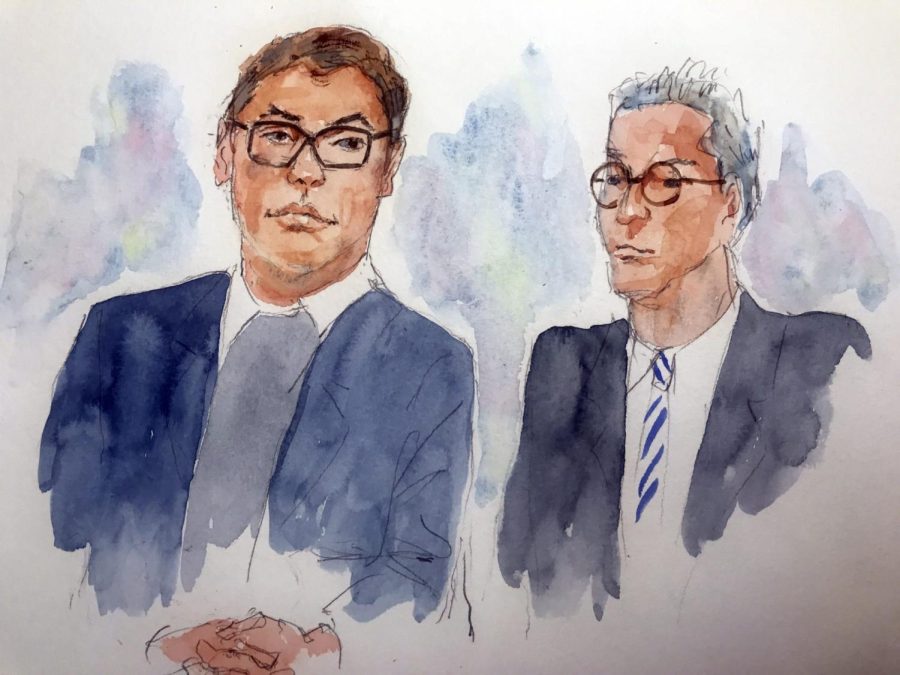
Since the militant group’s violent rise, the Islamic State of Iraq and Syria (popularly known as ISIS) has not failed to make their extremist and brutal behaviors known, releasing execution videos as a method of “beating the war drums,” as well as an act of intimidation and possibly even a recruitment technique. Whatever their intentions, ISIS never fails to make a point, and make it loudly.
It seems that, as the group releases new videos depicting the execution of captured prisoners or other depraved acts, they become more and more well-produced. In the latest two videos, the group went so far as to edit the footage in a Hollywood style that was reminiscent of horror movie trailers. They used editing and sound effects to build tension in a way that could make one question what they were really watching.
Eric Liberacki, stage manager and AV specialist in the College of Digital Media, offered his thoughts on the purposes driving these highly produced executions. “Whether they’re using it to recruit people (or) to scare people, I think if you watch a really grainy video … people might stop watching. People might not pay attention to that,” Liberacki said.
The videos have shown an arc of progression in their production quality. This quality became glaringly obvious with the release of the video depicting the burning of the Jordanian pilot, Lt. Muath al-Kaseasbeh. The video depicted a highly-staged and over-dramatic ceremony leading up to the actual killing.
In the video following this, showing the beheading of 21 Egyptian Christians, the ISIS media team was active again. More editing tricks and sound effects were present, and the presentation was almost more disturbing than the events depicted. Executions are now being used as the subject of cinematic productions.
Chuck Hickey, CDM professor, said that ISIS is among few groups to display such actions so theatrically. “Usually, in the past, any ideological group would use media propaganda to hide brutality, whereas (ISIS) is putting their brutal foot forward which is really interesting or strange to me,” Hickey said.
ISIS’ display of the atrocities they commit is a tactic with little equal precedence. Possibly the only other group to recently showcase their brutality in such a way would be certain Mexican drug cartels. They use filmed executions as a message to others of what will happen if they do not cooperate. They do not, however, edit and polish their videos in the same way ISIS does.
Hickey noted that these videos were not being produced for consumption in the Middle East. “They’re using Hollywood tricks. So that would mean it must have something to do with wanting the West to look at this,” Hickey said. “I feel like they’re trying to speak to us in our language. It’s the language of Hollywood horror films.”
ISIS’ media division, called Al Hayat Media Center, has a focused idea about who their target audience is. They also direct their messages in impactful ways. The videos capture viewers’ attention and make it hard to look away. ISIS is very skilled at both “public relations” and brutal violence, which has become their trademark.
Film propaganda is only the beginning. ISIS effectively uses YouTube, Twitter, Instagram and Tumblr, as well as their own application. Foot soldiers upload videos of everyday activities. There were even rumors of a video game similar to “Grand Theft Auto” that was modeled after ISIS’ activities. According to a recent New York Times article, ISIS and its supporters generate “90,000 tweets and other social media responses every day.”
The article reported that the U.S. is fighting this propaganda with plans to expand a small State Department agency called the Center for Strategic Counterterrorism Communications. The plan to combat ISIS’ media is still coming together, however.
According to the U.S. Undersecretary of State for Public Diplomacy and Public Affairs, Richard A. Stengel, the efforts to counter ISIS’ media team could have been better coordinated. “We’re getting beaten on volume, so the only way to compete is by aggregating, curating and amplifying existing content,” Stengel said.







